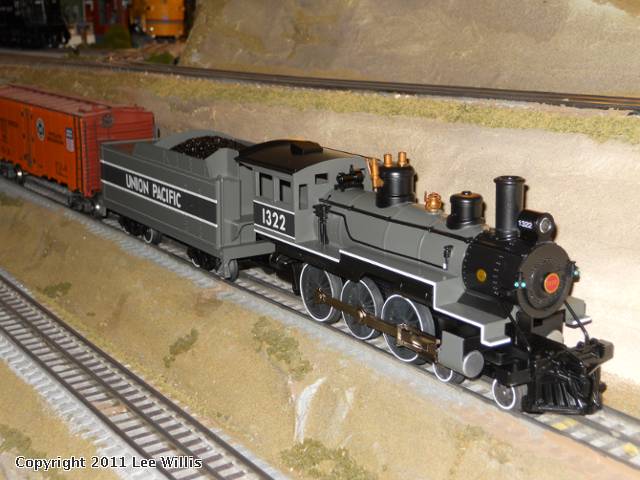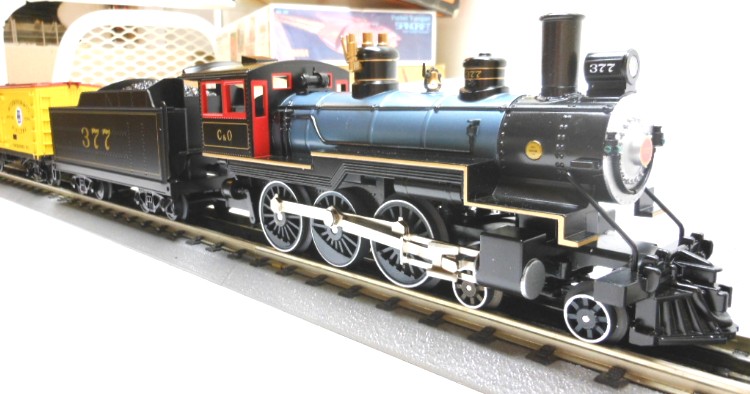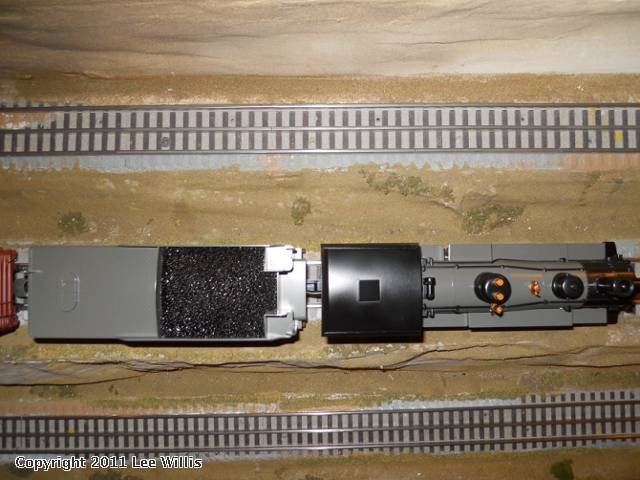
It is a very basic locomotive - not a lot of detail cast in or added on, but I am more than satisfied considering the cost. The loco is die cast metal and nice and heavy but the tender is quite light weight -- I wonder if it won't stringline around sharp curves when pulling a heavy train behind it. I'll add some weight to it. The paint is first class and it looks to me like it is scale size or close.
Anyway, this is a VERY good runner, extremely smooth at very slow speeds - I realize Williams is known for this but it is impressive all the same. It navigates around my all-36" loops nicely and looks good doing it. I have not tried to have it pull more than five rolling stock but will test it with more later. The smoke unit does not puff but is quite volumous. I am very pleased.








